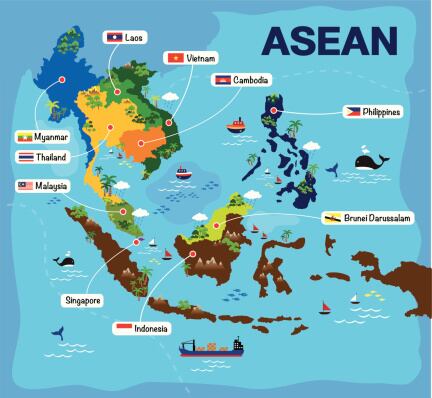Instead, imports from outside the bloc, domestic production and US dollar-based smuggling continue to thrive, say experts.
The ASEAN Economic Community (AEC), comprising Brunei, Cambodia, Indonesia, Laos, Malaysia, Myanmar, the Philippines, Singapore, Thailand and Vietnam, includes a large number of common standards, including disease controls and slaughter procedure guidance. Tariffs on intra-ASEAN meat and livestock trades are also supposed to be cut and scrapped.
In the run-up to the AEC launch, it was widely predicted by ASEAN economists that AEC countries with a competitive domestic meat industry, such as Thailand, would see their meat exports increase to the populous AEC markets that do not, such as Vietnam and the Philippines.
Focus on domestic markets
Yet imported meats have continued to roll into the region, mainly from Australia, New Zealand, the US and India. An ASEAN 2014 statistical bulletin noted that more than 80% of ASEAN live animal, meat, wool and oats imports originate from Australia and New Zealand, for instance. And ASEAN governments have continued to protect their domestic meat and livestock industries.
Meanwhile, local meat and livestock suppliers have kept focusing on their domestic markets: “Despite the AEC, the Philippines is more focused on its domestic market, which remains highly protected,” said Jesus Cham, a spokesman for the Philippines’ Meat Importers & Trading Association, speaking to GlobalMeatNews. “Owing to ASEAN and Asian countries not having as much clout as the western countries in order to make the Philippines open its borders, there still are formidable non-tariff barriers to hurdle,” he added.

According to a senior Australian meat executive with a long personal history of engagement in the southeast Asian meat and livestock business, another reason for the AEC’s failure to create a splash in the meat trade might be that the Greater Mekong area has been a de facto free-trade area for decades. Here, the mighty US ‘green-back’ has replaced all import/export permits. The Great Mekong area covers Cambodia, Southern China, Myanmar, Laos, Thailand and Vietnam.
Free movement ‘problem’
“The Greater Mekong area must be one of the world’s most effective smuggling areas where products that are legally banned move across all regional borders using corrupt payments, and this certainly applies to the cattle and meat business,” said a GlobalMeatNews source.
“Live cattle are the main cross-border trade as refrigerated product is much more tricky from a logistics point of view,” the source added.
The Australian meat executive went on to emphasise that this free movement of cattle is a major problem for foot-and-mouth disease control and is, in fact, the main reason that the disease is effectively out of control across the region.
According to our source, a recent outbreak in Vietnam came from live cattle smuggled from Laos, which were infected by an Indian strain of the disease transmitted through smuggled Indian beef.
